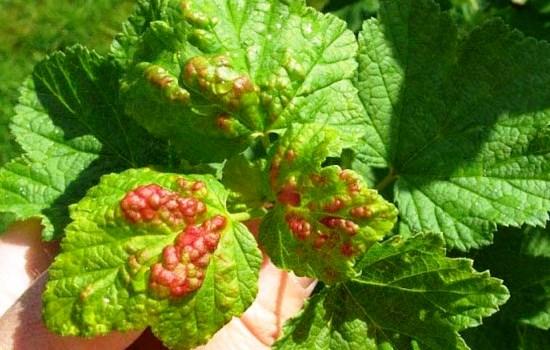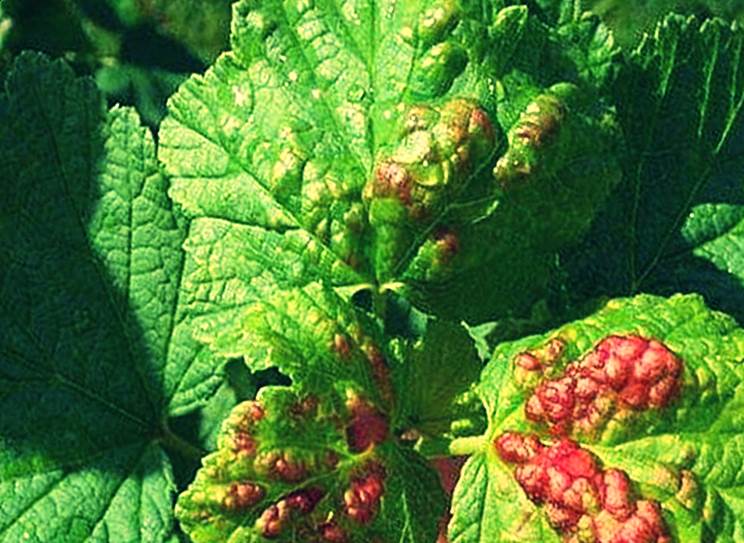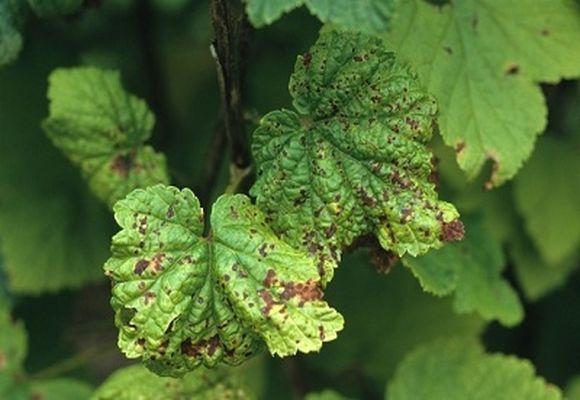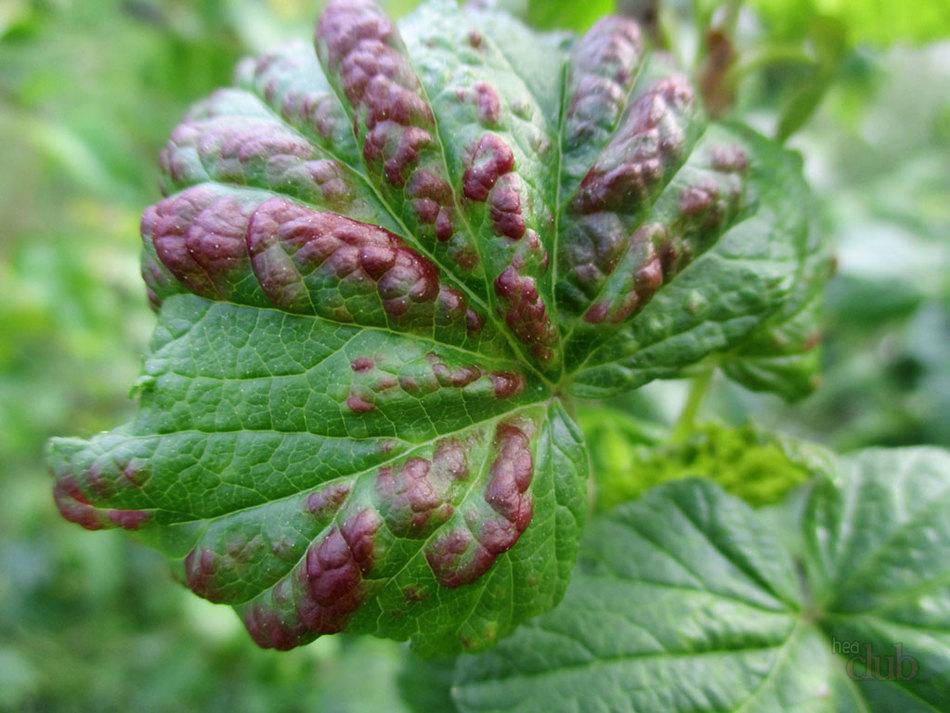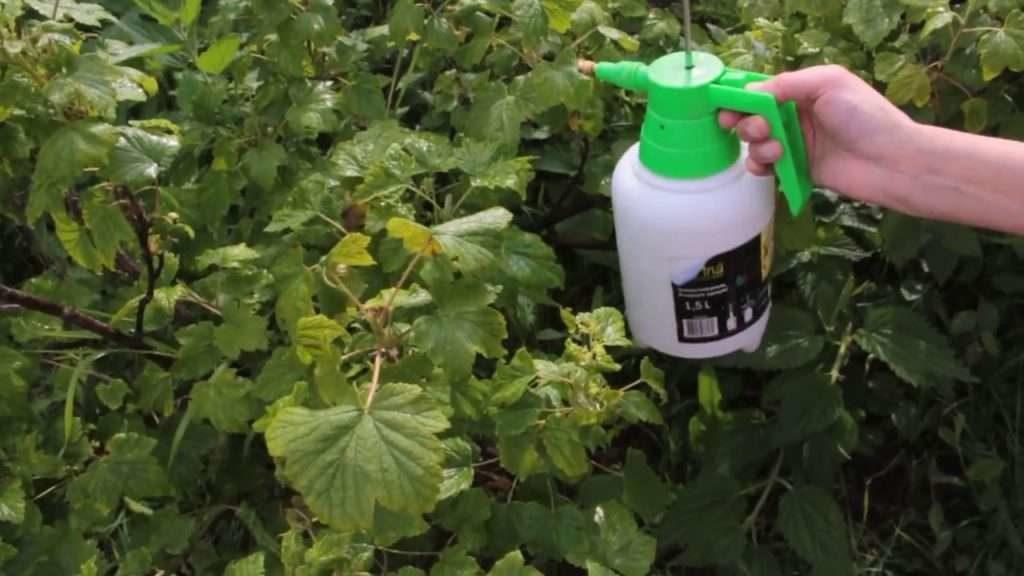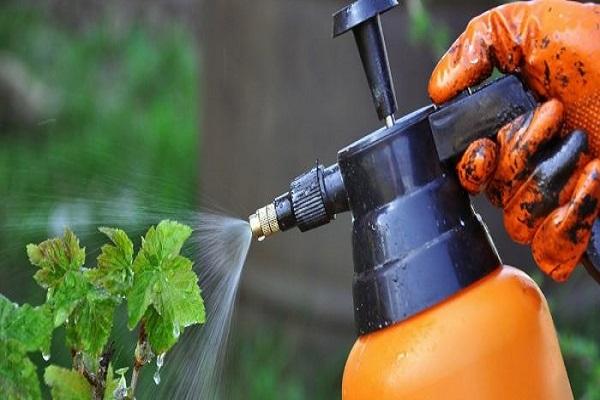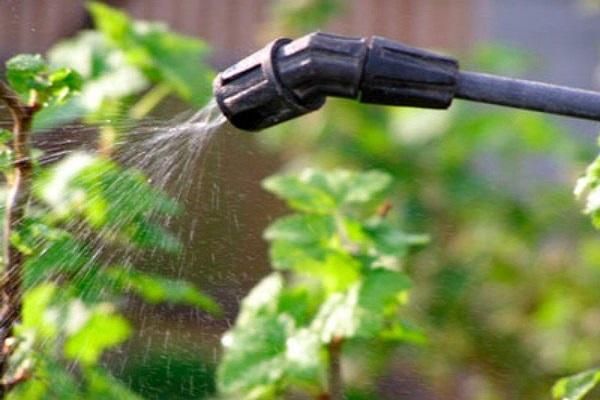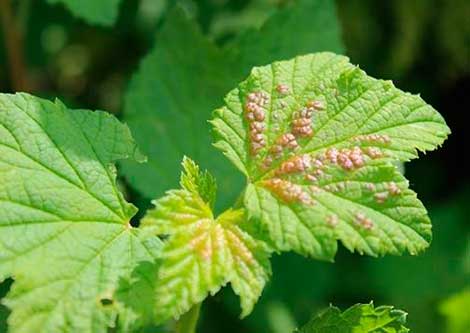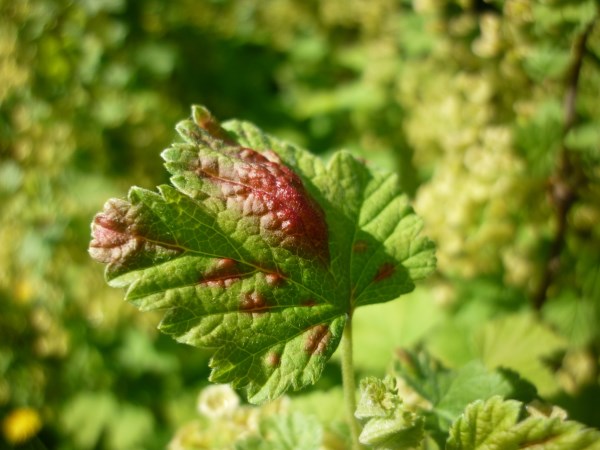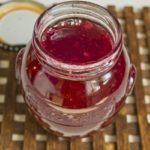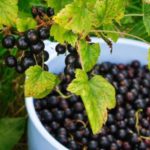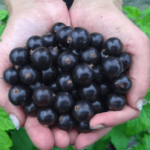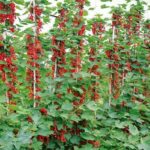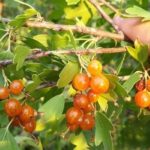Black and red currant berries are tasty, extremely healthy and rich in microelements, they are perfectly stored, maintaining their usual taste even when frozen. Bushes of the plant are found in every garden; they are carefully cared for, despite their capriciousness and tendency to develop diseases. The causes of currant anthracnose and methods of combating fungal infection are the topic of the presented material.
- Reasons for the development of the disease
- Who is the causative agent
- Which currant varieties are susceptible to the disease?
- Varieties of red currants
- black currant
- Symptoms of infection
- Preparations for treating bushes
- Folk methods of struggle
- Special preparations
- Microbiological
- Classic fungicides
- How to deal with currant anthracnose
- Disease prevention
Reasons for the development of the disease
The disease is caused by a fungus. The reasons for infection of plantings and the development of infection on leaves, petioles and ripe berries are excessive humidity, transfer of infection from diseased plants.
Remember: there are no varieties of currants that are not susceptible to anthracnose, but proper care prevents the development of the disease.
It is necessary to fight the disease when the first signs of infection are detected. Since the fungus spreads rapidly throughout the garden, not only currant bushes should be treated, but also garden tools (secateurs, hoees) used for gardening work.
Who is the causative agent
The causative agent of the disease is fungi from the genus Deutromycetes, of which there are several species - Colletotrichum, Kabatiella, Gloeosporium. The pathogen is found in the foliage, under the bush, in the soil, on the affected branches of the plant; the spread of the disease begins from the lower branches. Heat and moisture - a combination that occurs when average daily temperatures rise to 22 °C in May and early June, leads to the rapid development of the disease.
Anthracnose affects not only currants. The disease appears on raspberries, strawberries, melons, grapes, and other garden crops. Currants suffer from fungus most often. During hot and dry periods, the disease develops much less frequently.
Since spores can be carried by gusts of wind, insects, fall from one plant to another with raindrops, or be carried by garden tools - to avoid the problem, it is necessary to take preventive measures.
Which currant varieties are susceptible to the disease?
Red and black currants suffer from this fungal disease.Black currants are affected by anthracnose less often than red currants, but old, long-bred varieties are prone to the disease.
Varieties of red currants
If a fungal outbreak is detected, all plantings on the site must be treated. Baraba and Beloved are especially susceptible to the disease.
The following have good resistance to fungal infections:
- Roland;
- Red Cross;
- Ilyinka;
- Lights of the Urals.
To reduce the likelihood of infection, you should plant zoned varieties, choose light, non-acidic soil for the bushes, and replace existing plantings in the garden with varieties that are most resistant to anthracnose.
black currant
Blackcurrant varieties that are highly susceptible to anthracnose are Bagira, Dobrynya, Dubrovskaya, and Exotika.
Fungus resistant:
- Izyumnaya;
- Vigorous;
- Nina;
- Pygmy.
Systematic treatment of plantings and the choice of modern varieties of red and black currants reduce the likelihood of infection of garden plants.
Symptoms of infection
Anthracnose is also called leaf spot because of the brownish spots that appear on the leaves, which, as the disease progresses, merge into “rusty” bumps and spots that affect the entire surface of the leaf. The infected leaf dries out, curls and falls off. If left untreated, the currant bush instantly loses its foliage.
In red currants, in addition to the leaves, the disease affects the petioles and fruits. Depressed brown spots appear on them. Bushes affected by the fungus lose their foliage, stop bearing fruit, and die from pests and frost. In addition, they become spreaders of a dangerous disease throughout the garden. Anthracnose is especially dangerous in warm, rainy weather.
Preparations for treating bushes
Agrotechnical methods for the prevention of fungal diseases are used, including anthracnose, microbiological and fungicidal means of combating fungus.
Folk methods of struggle
Folk remedies for combating anthracnose are not very effective. To protect against fungus, currant bushes and the ground underneath them are scalded with hot water (70-80 °C). This should be done in early spring, before the buds swell.
To protect against insects that carry the fungus from one plant to another, use an infusion of garlic. 150-200 grams of unpeeled garlic are poured into a bucket of water (10 liters), left for a day, covered with a lid, then sprayed on the bushes.
Important: traditional methods are auxiliary; their use does not replace the use of microbiological and fungicidal agents.
Timely pruning of branches, cleaning up leaves (fallen leaves should be collected and burned), and digging up the ground under the bush will help protect the garden from infection. All these events are carried out in the fall, after the harvest. After sanitary pruning and harvesting of foliage and branches, the bush is treated with a solution of Bordeaux mixture (1%), a colloidal solution of copper preparations, and fungicides that can protect currants from a range of diseases and pests.
Special preparations
Microbiological and fungicidal preparations, which are purchased at specialized garden stores and used in strict accordance with the manufacturer’s instructions, help combat anthracnose. When spraying bushes, you must use protective equipment (goggles, apron, rubber gloves).
Complexes that can increase plant immunity and resistance to diseases and pests are used to treat currant bushes, protecting plantings from anthracnose.This effect is achieved by: a mixture of Topsin-M+, 1-2 milliliters of Zircon or Epin (growth stimulants), Immunocytophyte. Treatment is carried out in early spring.
Microbiological
Similar agents are used if fungal infection of currant bushes is detected during the ripening period, since fungicidal agents are strong poisons. Gamair, Fitosporin-M are not dangerous for humans and insects. They are used against fungus at the initial stage of infection; microbiological preparations must be used in strict accordance with the attached instructions. Spray the affected bushes at intervals of 2 weeks, during the rainy period - weekly.
Classic fungicides
Plants are treated with fungicides in early spring, before buds open and flower. Bushes with ovaries or ripe berries should not be sprayed, as these products are poisonous.
They can help with severe damage to currant bushes, in addition, they affect a complex of diseases that are dangerous for garden plants. To treat anthracnose, use:
- Bordeaux mixture;
- copper sulfate;
- Titanium;
- Topsin;
- Captan.
Plantings are sprayed again with these preparations after harvesting. The products are alternated because, with frequent use, fungi develop resistance to them.
How to deal with currant anthracnose
In the spring, before the buds open, the bushes are pruned, the plant and the soil under the bush are treated with Bordeaux mixture or suitable fungicides. If the disease is detected during fruit growth, the affected greenery is destroyed and the plantings are treated with Fitosporin. 2 treatments are required with an interval of 2 weeks. Repeated treatment with fungicides is carried out in the fall, after harvesting, dropping and harvesting leaves.
Disease prevention
To prevent anthracnose, currant bushes are planted in sunny areas, the plantings are not allowed to become dense, branches are pruned in a timely manner, varieties with disease resistance are selected, currants are watered moderately, pruned branches and fallen leaves are collected and burned.
Constant control of fungal infections, prevention and the use of agrotechnical methods of protection allow you to keep the plantings healthy and harvest a good harvest of berries. Garden tools are washed and treated with fungicides, the soil around the bush is dug up, and spraying is carried out in the fall and spring.
Currants were popular among gardeners, but now they are afraid to plant them in the garden due to the crop's susceptibility to diseases and pests. However, many disease-resistant varieties have already appeared. This has returned interest in the healthy berry, which is delicious fresh, in the form of preserves, jams, and other desserts.

